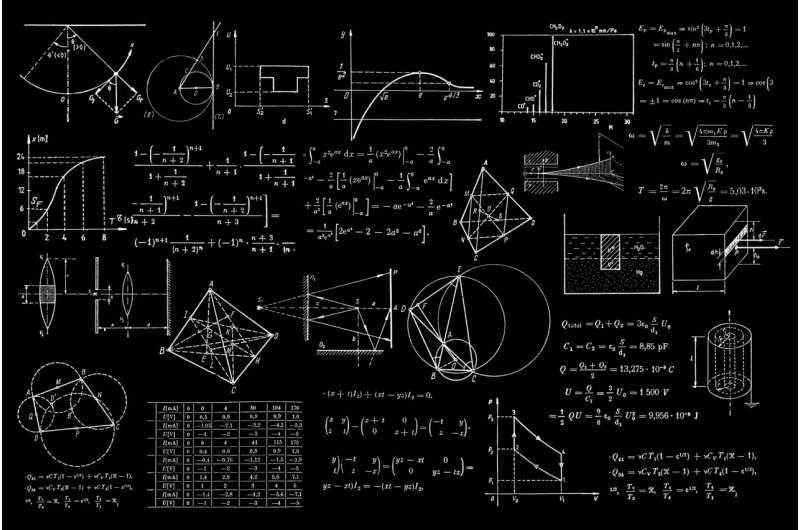This article has been reviewed according to Science X's editorial process and policies. Editors have highlighted the following attributes while ensuring the content's credibility:
fact-checked
trusted source
proofread
Losing count: The mathematical magic of counting curves

How can you figure out which points lie on a certain curve? And how many possible curves do you count by a given number of points? These are the kinds of questions Pim Spelier of the Mathematical Institute studied during his Ph.D. research. Spelier received his doctorate with distinction on June 12.
Counting curves, what does that mean on an average day? "A lot of sitting and gazing," Spelier replies. "When I'm asked what exactly I do, I can't always answer that easily. Usually I give the example about the particle traveling through time."
All possible curves
Imagine a particle moving through space and you follow the path the particle makes through time. That path is a curve, a geometric object. How many possible paths can the particle follow, if we assume certain properties? For example, a straight line can only pass through two points in one way. But how many paths are possible for the particle if we look at more difficult curves? And how do you study that?
By looking at all possible curves at the same time. For example, all possible directions from a given point form with each other a circle, and that is called a moduli space. And that circle is itself a geometric object.
The mathematical magic can happen because this set of all curves itself has geometrical properties, Spelier says, to which you can apply geometrical tricks. Next, you can make that far more complicated with even more complex curves and spaces. So not counting in three but, for example, in eleven dimensions.
Spelier tries to find patterns that always apply to the curves he studies. His approach? Breaking up complicated spaces into small, easy spaces. You can also break curves into partial curves. That way, the spaces in which you're counting are easier. But the curves sometimes get complicated properties, because you have to be able to glue them back together.
Spelier says, "The goal is to find enough principles to determine the number of curves exactly."
Seeking proof for points on curves
In addition to curves, Spelier also counted points on curves. He studied the question: how many solutions does a given mathematical equation have?
These are equations that are a bit more complicated than the a2 + b2 = c2 of the Pythagorean theorem. That equation is about the lengths of the sides of a right triangle. If you replace the squares with higher powers, it is more difficult to investigate solutions. Spelier studied solutions in whole numbers, for example, 32 + 42 = 52.
Meanwhile, there is a method to find those solutions. Professor of Mathematics Bas Edixhoven, who died in 2022, and his Ph.D. student Guido Lido developed an alternative approach to the same problem. But to what extent the two methods match and differ was still unclear. During his Ph.D. research, Spelier developed an algorithm to investigate this.
The first person with an answer
Developing that algorithm is necessary to implement the method. If you want to do it by hand, you get pages and pages of equations. Edixhoven's method uses algebraic geometry. Through clever geometric tricks, you can calculate exactly the whole number points of a given curve. Spelier proved that the Edixhoven-Lido method is better than the old one.
David Holmes, professor of Pure Mathematics and supervisor of Spelier, praises the proof provided. "When you're the first person to answer a question that everyone in our community wants an answer to, that's very impressive. Pim proves that these two methods for finding rational points are similar, an issue that really kept mathematicians busy."
Doing math together
The best part of his Ph.D.? The meetings with his supervisor. After the first year, it was more collaboration than supervision, both for Spelier and Holmes. Spelier says, "Doing math together is still more fun than doing it alone."
Spelier starts in September as a postdoc in Utrecht and is apparently not yet done with counting. After counting points and curves, he will soon start counting surfaces.
More information: Thesis: Counting curves and their rational points
Provided by Leiden University





















